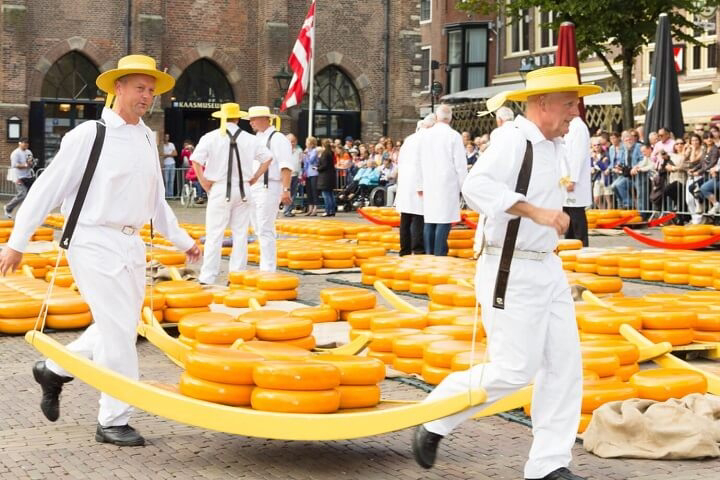Tourist Attractions
Jordaan and Amsterdam's Canals
Where to Stay Mid-Range
In the heart of the Museum Quarter and just one street over from the Van Gogh Museum, the Hotel Fita is a family-run boutique hotel that offers not only a complimentary hot breakfast but free laundry service as well. Although the hotel is small, the guest rooms are quite spacious and have cute extras, like a rubber ducky for the tub.
Hotel JL No76 sits just across the street in an 18th-century mansion that has been carefully restored and updated with the latest technology, offering guests complimentary use of an iPad, an iPod docking station, strong Wi-Fi, and an extensive DVD lending library.
Tourists will enjoy the hip, sophisticated atmosphere of Hotel Sebastian's, where the well-appointed rooms offer standard amenities, like mini-fridges and safes, as well as tea and coffee. It is located at the northern end of the Canal Ring, just a few blocks from the train station and amid a plethora of boutiques and small restaurants
Where to Stay on a Budget
Although you will find that rooms tend to be on the small side, Amsterdam does have good budget options in a central location that allows you to get in more sightseeing. Hotel Nadia sits in the Canal Ring, near the edge of the Jordaan neighborhood, less than five minutes' walk to the Anne Frank House, yet is still very close to Dam Square and fun attractions like Madame Tussauds. Rooms are equipped with a safe, mini-fridge, tea and coffee facilities, and even a fresh vase of flowers picked from the hotel's small courtyard garden.
Just up the street, the Clemens Hotel has cozy rooms that are clean and updated and include breakfast, free Wi-Fi, and a mini-fridge. There is no elevator here, nor at Hotel La Boheme, an eco-conscious budget lodging, but staff members are happy to carry your bags up the steep stairs to your guest room. Rates here include breakfast, and the snug rooms are decorated and furnished in a way that opens up the space, including small balconies in most. This hotel is also located at the edge of the Canal Ring, close to both the Jordaan and Museum District neighborhoods.
Where to Stay for Families
For a luxury getaway with the family, the Kimpton De Witt Amsterdam is a great option that has plenty of family suites with fun design choices, like Escher-esque bathroom tiles and headboard lamps that look like birds. The hotel offers extras, such as a complimentary snack and beverage hour each day, and is convenient to popular family attractions, like the NEMO Science Center and the Anne Frank House.
The Hoxton Amsterdam has a hip but cozy feel, located waterside in the Canal Ring and surrounded by galleries, shops, and restaurants. Staff members are incredibly friendly, and guests can enjoy complimentary extras, like an hour of international calls each day and even "breakfast in a bag" delivered to the room each morning. Other amenities include a reasonably priced restaurant, as well as a lobby convenience shop with grocery store prices - especially handy for satisfying hungry kiddos at a moment's notice.
Where to Stay for Romance
Couples looking for a luxurious romantic getaway will fall in love with the decadent Renaissance-style rooms at The Toren. Its location in the Canal Ring, just a block from the Anne Frank House, makes it convenient to top attractions, while amenities like a Jacuzzi tub, mood lighting, and of course room service make this the perfect place for taking a break from sightseeing.
At the southern end of the Canal Ring, near Rembrandtplein, and well positioned to also reach Jordaan and Museum District attractions with ease, the Banks Mansion has a more contemporary feel with its Frank Lloyd Wright inspired décor. Couples have fewer things to worry about thanks to the hotel's "all-inclusive" rates that cover breakfast, beverages, and a generous afternoon spread of fine cheeses and meats.
THE CUSTOMS AND TRADITIONS
The customs and traditions of the country, which I will talk about next, say a lot about the character of the Dutch, which in general we could say that they are happy people who take their lives calmly, without stressing more than the account.












No hay comentarios.:
Publicar un comentario